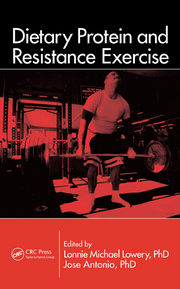 by Jose Antonio PhD FISSN FNSCA. Should you spread your calories throughout the day or eat more of them at a certain meal? That’s the million dollar question, right? We all know that there are many factors that affect body composition. You want to gain muscle and lose fat, right? So what should you do? There are six key strategies that you should consider when your goal is to look purrrrty. 1) The simplest though least effective over the long run is just eat fewer calories. Sure you’ll lose weight, but it’ll be fat and muscle. 2) Eat more protein. That’s a no brainer. 3) Change the macronutrient ratio of your diet. That is, eat less carbs and more protein/healthy fat. 4) Choose different kinds of protein. For instance, cod protein has been shown to improve fat loss. 5) Nutrient timing strategies have been shown to improve body composition and muscle protein synthesis. And last but not least 6) Supplements. Just taking creatine alone will enhance body composition. Today’s lesson for you gym nerds involves #5. In this case, what happens when you shift your calories (and therefore protein) from an even distribution over breakfast, lunch and dinner to one in which most of your calories are consumed at dinner? A study from the Journal of Nutrition just hot off the press answered that question (authors: Mamerow MM et al. J of Nutr Jan 29 2014).
by Jose Antonio PhD FISSN FNSCA. Should you spread your calories throughout the day or eat more of them at a certain meal? That’s the million dollar question, right? We all know that there are many factors that affect body composition. You want to gain muscle and lose fat, right? So what should you do? There are six key strategies that you should consider when your goal is to look purrrrty. 1) The simplest though least effective over the long run is just eat fewer calories. Sure you’ll lose weight, but it’ll be fat and muscle. 2) Eat more protein. That’s a no brainer. 3) Change the macronutrient ratio of your diet. That is, eat less carbs and more protein/healthy fat. 4) Choose different kinds of protein. For instance, cod protein has been shown to improve fat loss. 5) Nutrient timing strategies have been shown to improve body composition and muscle protein synthesis. And last but not least 6) Supplements. Just taking creatine alone will enhance body composition. Today’s lesson for you gym nerds involves #5. In this case, what happens when you shift your calories (and therefore protein) from an even distribution over breakfast, lunch and dinner to one in which most of your calories are consumed at dinner? A study from the Journal of Nutrition just hot off the press answered that question (authors: Mamerow MM et al. J of Nutr Jan 29 2014).
The study was nice in its elegant simplicity. They took healthy subjects and they consumed an isocaloric (same calories) and isonitrogenous (same protein) meal in two different ways. The first way involved what referred to as an EVEN pattern; the second way involved what they called a SKEW pattern. The EVEN pattern of eating had them eating the following calories and protein at breakfast, lunch and dinner: About 800 kcals and 30 grams of protein at each meal. The SKEW pattern had them eating in the following pattern: 537, 683 and 1100 kcals for breakfast, lunch and dinner, respectively. And 11, 16 and 64 grams of protein at breakfast, lunch and dinner, respectively.
So remember, they ate the same total calories but they distributed the calories and protein differently depending on whether it was an EVEN or SKEW feeding pattern. Overall, they consumed about 2400 kcals, 94 g protein, 312 g of carbs and 85 g of fat. What they found was quite interesting. Eating in an EVEN pattern resulted in a greater increase in muscle protein synthesis than eating in a SKEW pattern. Thus, the common practice of eating most of your calories during dinner is not an efficient means of promoting gains in muscle mass.
One might posit that the low level of protein consumed at breakfast and lunch in the SKEW group failed to meet the minimal amount of protein needed to hit a ‘leucine threshold’ and thus stimulate muscle protein synthesis. It would be interesting to see what would have happened if the SKEW group had supplemented with leucine at breakfast and lunch to make up for the insufficient consumption of this important amino acid.
I would suggest that you consume a minimum of 20 grams of protein in each meal. And better yet, the more the better. Although muscle protein synthesis may level off at 20-40 grams per meal, it is likely that you will still get a greater anabolic effect with even more protein via the inhibition of protein degradation. However, you will rarely see protein degradation measured concurrently with synthesis in these studies due to the difficult technical nature of this measure. Nonetheless, what would really answer the question is whether body composition, and more specifically lean body mass, would increase when following a very high protein diet. Certainly, if the human body is limited in how much protein is needed to stimulate muscle mass gain, then there must be a ceiling upon which any further increase in protein intake does not result in further gains in lean body mass.



